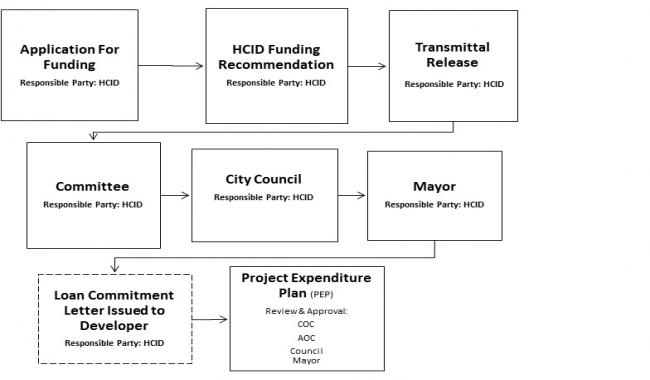City of L.A.’s Final Assessment of Fair Housing
As part of the City’s commitment to fair housing and
November 26th, 2023 | Housing, Housing Development, Supportive Housing (Prop HHH)| rluc
2018 – 2019 Regulations
View the 2018 – 2019 Prop HHH SH Loan Program Regulations as approved by the City Council and Mayor, on June 29, 2018
TERM SHEET OVERVIEW
The Prop HHH SH Loan Program Term Sheet was approved by City Council and provides a general framework for the creation of the new HHH Loan Program. It is in bullet point format and provides information such as interest rate, loan amount limits, tenant selection, etc. The full Rules & Regulations were crafted based on the Term Sheet.
Prop HHH invites proposals for innovative approaches. Program rules and regulations are updated annually.

Approval Process Definitions Developer Requirements HHH Occupancy Requirements Prop HHH Proposition HHH Qualifications Rates & Terms Regulations requirements Service Requirements SH SH Service Requirements Supportive Housing Tenant Selection Terms Terms & Regulations Threshold Requirements
Last modified: November 26, 2023

Do not miss important notifications
FOLLOW US
As part of the City’s commitment to fair housing and
LAHD is seeking proposals for qualified organizations / contractors to
LAHD is seeking proposals for the provision of housing administrative
NOTICE OF PUBLIC HEARING ON MULTIFAMILY HOUSING REVENUE BONDS OR
The Los Angeles Housing Department is on the move and
LAHD is seeking proposals for the provision of consulting services
The Los Angeles Housing Department (LAHD) is pleased to announce
LAHD is seeking proposals for the provision of tenant outreach
Application opening date: Friday, November 3, 2023 Submission deadline: Friday,
LAHD and the Housing Authority of the City of Los
LAHD is seeking proposals for the provision of HOPWA services.
LAHD is seeking proposals for the provision of Urgent Repair
The Los Angeles Housing Department (LAHD) has posted the Affordable
LAHD is seeking proposals for the provision of information technology
LAHD is seeking proposals for the provision of occupancy monitoring
LAHD is seeking proposals for the provision of OSHA staff
LAHD is seeking proposals for the provision of site-design analysis
The Los Angeles Housing Department (LAHD) is pleased to announce
The Los Angeles Housing Department (LAHD) has posted the Questions
The Los Angeles Housing Department has posted the Questions and
The Los Angeles Housing Department has posted the Questions and
LAHD is seeking proposals for the provision of outreach services.
The Los Angeles Housing Department (LAHD) is pleased to announce
LAHD is seeking proposals for the provision of information systems,
The Los Angeles Housing Department (LAHD) is pleased to announce
LAHD is seeking proposals for the provision of various technical
LAHD is seeking proposals for the provision of relocation consultant
LAHD is seeking proposals for the provision of prevailing wage
The Los Angeles Housing Department (LAHD) is pleased to announce
The CA COVID-19 Rent Relief program will stop accepting new
LAHD seeks to solicit proposals from qualified vendors for the
LAHD is soliciting proposals from qualified contractors to provide services
To schedule an appointment at one of our 5 different
To strengthen partnerships and improve collaboration with our affordable housing
The Los Angeles Housing Department (LAHD) recognizes the COVID-19 pandemic
The City of Los Angeles, in partnership with the State
LAHD is resuming its inspection services. LAHD will commence deploying
ATTN: Landlords! To better serve you, LAHD is offering “How
As a result of the Coronavirus (COVID-19) and the Mayor’s
City of Los Angeles 2023 – 2028 Assessment of Fair